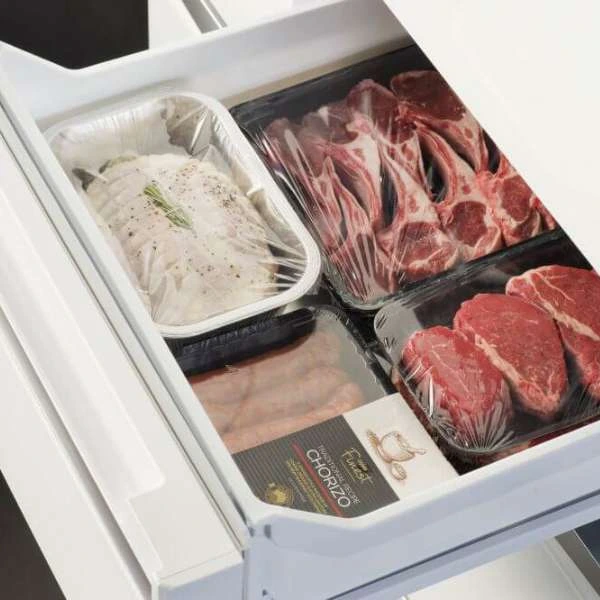Proper meat storage is essential not only for maintaining quality and flavor but also for ensuring food safety. Whether you buy meat in bulk or just a few cuts for the week, knowing how to store it correctly can save you money and reduce waste. In this guide, we’ll explore the best practices for storing different types of meat, tips for extending freshness, and important safety considerations.
Understanding Meat Spoilage
Before diving into storage tips, it’s important to understand why meat spoils. Factors such as temperature, moisture, and exposure to air can lead to bacterial growth, which can make meat unsafe to eat. Spoiled meat may develop an off smell, discoloration, and a slimy texture. Knowing how to properly store meat can help prevent these issues.

Best Practices for Meat Storage
1. Refrigeration Basics
- Temperature: Keep your refrigerator at or below 40°F (4°C) to slow down bacterial growth.
- Placement: Store meat on the bottom shelf to prevent juices from dripping onto other foods.
2. Wrapping and Packaging
- Original Packaging: If the meat is vacuum-sealed, it can be stored as is until the use-by date.
- Re-wrapping: For meats in Styrofoam trays, rewrap them in plastic wrap or aluminum foil to minimize air exposure.
- Use Airtight Containers: For ground meats or cuts that have been opened, place them in airtight containers to maintain freshness.
3. Freezing for Longevity
- Wrap Properly: For long-term storage, wrap meat tightly in plastic wrap, followed by aluminum foil, or use freezer bags to prevent freezer burn.
- Labeling: Always label your meat with the date it was frozen to keep track of freshness. Most meats can be safely frozen for several months:
- Beef and Pork: 4-12 months
- Poultry: 1 year
- Fish: 6 months
4. Thawing Meat Safely
- Refrigerator Thawing: The safest way to thaw meat is in the refrigerator. This allows for even thawing and keeps the meat at a safe temperature.
- Cold Water Method: If you need to thaw meat quickly, submerge it in cold water (in a sealed bag) and change the water every 30 minutes.
- Avoid Room Temperature: Never thaw meat at room temperature, as this can encourage bacterial growth.
Special Considerations for Different Types of Meat
1. Beef
- Store ground beef separately from whole cuts to avoid cross-contamination.
- Use within 1-2 days if refrigerated; otherwise, freeze.
2. Poultry
- Keep chicken and turkey in their original packaging until ready to use.
- Store in the fridge for 1-2 days, or freeze for longer storage.
3. Pork
- Like beef, store pork in its original packaging until ready to use.
- Refrigerate for 3-5 days, or freeze for extended storage.
4. Fish and Seafood
- Fresh fish should be cooked or frozen within 1-2 days of purchase.
- Store in the coldest part of the fridge and use a shallow container to allow for airflow.
Tips for Extending Meat Freshness
- Use Meat Quickly: Plan meals that include fresh meat to reduce the time it spends in the fridge.
- Keep It Cold: During transport, keep meat in an insulated bag with ice packs if you’re not heading straight home.
- Check Dates: Always check sell-by and use-by dates before purchasing and consuming meat.
Smell Test: Trust your senses—if meat smells off or looks discolored, it’s best to err on the side of caution and discard it.
Conclusion
Proper meat storage is vital for maintaining freshness, flavor, and food safety. By following these guidelines, you can enjoy your meat at its best while minimizing waste and ensuring a safe dining experience. Whether you’re a home cook or an occasional chef, taking the time to store your meat correctly will pay off in delicious meals and peace of mind. Happy cooking!


